When carrying a load on any vehicle the first priority is that it’s secure so that it doesn’t come off while traveling and endanger other road users.
Not all loads have to be secured with any particular type of fastening if they are constrained by the truck or trailer body (e.g sand in a tipper truck, or milk in a tanker truck). But, if the load is being carried on an open trailer or lowloader, or in a curtain-side vehicle then it will need to be secured to the deck.
There are a number of ways of securing a load to a trailer or truck.
ISO containers have their own fixing method: twist locks. Other loads need to be secured with either rope, canvas straps, webbing or chains. These are referred to as lashings.
Lashings are fixed to the truck and tightened using different devices such as a turnbuckle or ratchet, or different knots such as a trucker’s hitch. Lashings must be rated to take a certain amount of load, depending on whether the load is secured against a headboard or blocked, or not secured against a headboard.
Trucks have anchor points and rails for these fastenings. Different types of fastenings and different loads exert different types of force on these anchor points and lashings.
Lashings and anchor points have to be able to take stresses in different directions (forwards and backwards under braking and acceleration, side-to-side during cornering, and vertically when going over bumps).
Lashings must be secure and not at risk of coming undone otherwise the load becomes unsafe. Some lashings can come loose in some circumstances which is why truck drivers check their load frequently throughout their journey. For example, cold and wet weather can affect ropes.
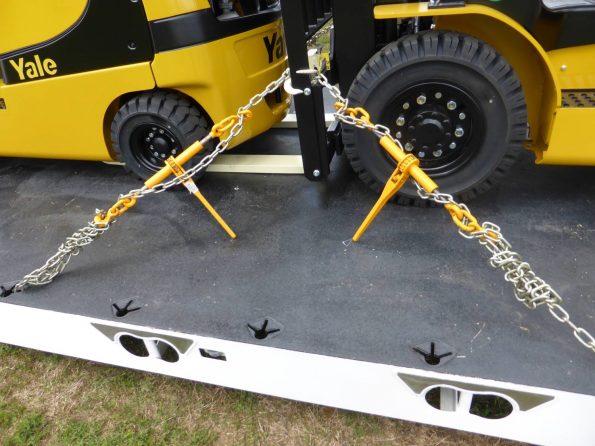
These forklift trucks are chained to the trailer. The chains are tightened using wrench binders.
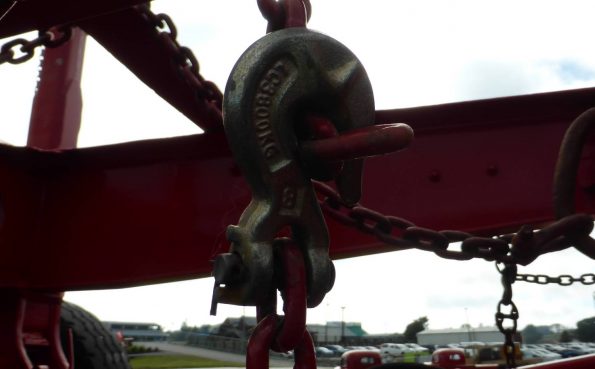
Grab hooks are designed to grab onto a chain
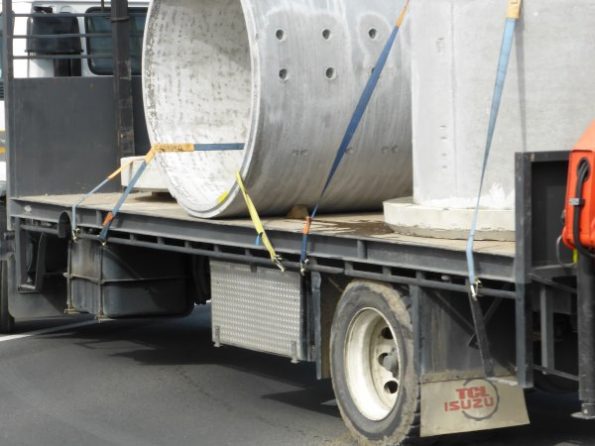
These concrete pipes are lashed with canvas straps and hooks. Sleeves on the straps protect them against rubbing from the sharp concrete edges. They will be tightened on the other side by ratchets.
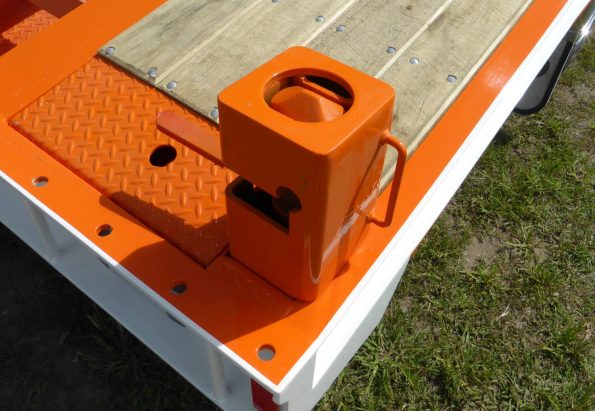
ISO container locks make sure large shipping containers are secure
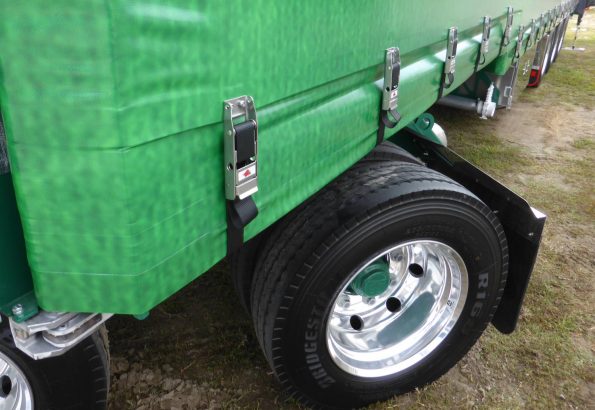
The curtains of curtain-side trucks and trailers are tensioned using ratchets
